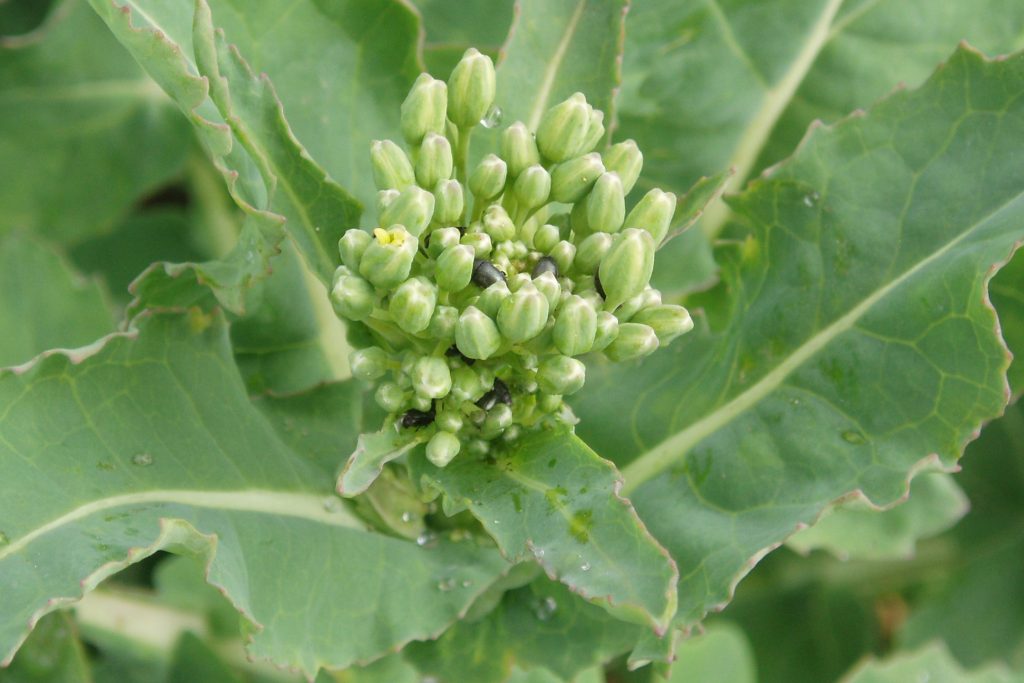Guidance highlights fragile nature of pyrethroids
21st September 2018
Guidelines for the management of insecticide resistance in several key UK crops have been updated by the Insecticide Resistance Action Group (IRAG). The guidance has been issued following restrictions on

Several key crop species are associated with pyrethroid resistance – including pollen beetle.
Guidelines for the management of insecticide resistance in several key UK crops have been updated by the Insecticide Resistance Action Group (IRAG).
The guidance has been issued following restrictions on the use of pesticides, which make it even more critical to protect the remaining products on the market.
Published by AHDB, the updates cover brassica, cereals, oilseed rape and potatoes. A new publication outlining the general principles of resistance management has also been issued.
A common thread across all guidelines is the threat to pyrethroid-based insecticides, to which several UK crop pests have already developed resistance.
Sue Cowgill, AHDB senior crop protection scientist for pests, said: “AHDB supports the UK resistance action groups in their efforts to promote resistance management advice.
“The most effective way to manage resistance is to minimise insecticide use through integrated pest management (IPM). AHDB’s website contains a wealth of pest management information, which can be used to identify, monitor and manage pests.”
One example of the mounting pressures on pyrethroid chemistry is associated with the European Commission’s decision to ban outdoor use of the neonicotinoids imidacloprid, clothianidin and thiamethoxam.
The affected products, which will be withdrawn from the market by 19 September 2018, include insecticide seed treatments (clothianidin) that protect cereal crops from viruses transmitted by the bird cherry–oat aphid and the grain aphid.
Sue said: “Affected seed treatments must be used up by 19 December 2018. This means cereals will be protected this autumn. Farmers should use this time, however, to consider how management will need to change next year. The temptation will be to turn to pyrethroids but resistance monitoring shows this class of chemistry should be a last resort.”
Although there is no evidence of insecticide resistance in bird cherry–oat aphid or rose-grain aphid, the story is different for grain aphids – as moderate levels of resistance to pyrethroids have been detected in laboratory assays. In practice, this means sprays may not be effective against this pest unless used at their full label rate.
Several other key crop species are also associated with pyrethroid resistance – including cabbage stem flea beetle, cabbage whitefly, diamond-back moth, onion thrips, peach–potato aphid and pollen beetle.
Where a pyrethroid spray is deemed necessary, people are urged to ensure good crop coverage is achieved, as the chemistry only has contact activity. The guidance also asks people to think carefully about the use of tank mixes, as it can result in suboptimal control of targets and drive the development of resistance.
If an insecticide has been applied correctly and has failed to control the target pest as expected, IRAG says further applications of any insecticide from the affected mode of action should not be made.
Any resistance concerns should be reported to a BASIS-qualified adviser or to AHDB’s lead researcher on resistance monitoring work – Dr Steve Foster stephen.foster@rothamsted.ac.uk
The full set of insecticide resistance management guidance can be accessed via ahdb.org.uk/knowledge-library/IRAG
AHDB is also asking people to guide investment in pest monitoring services over the next five years by completing a short survey. The survey, which closes on 30 November 2018, can be accessed via cereals.ahdb.org.uk/pestsurvey
